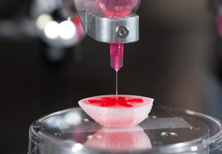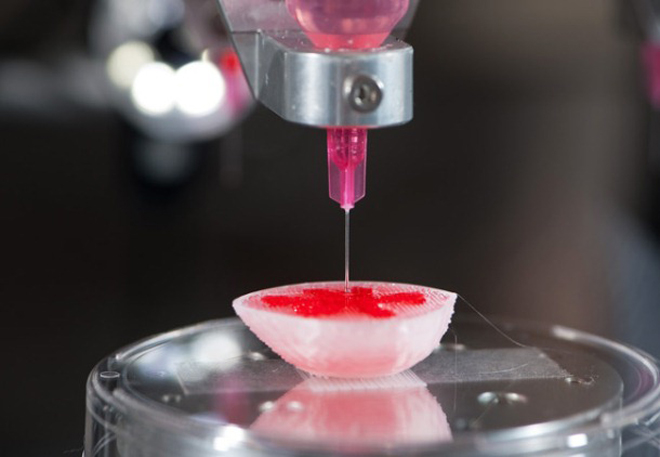3D Bioprinting – Genesis and Beyond

3-D printers work in the similar way as inkjet printers do. It utilizes digital data to deposit a desired material, instead of ink in successive layers along with a UV laser solidifying photopolymer. The discovery of 3-D printing in 1984 was brought about by the invention of inkjet printers, when Charles Hull, later the co-founder of 3D Systems, created stereolithography and produced the first stereolithographic apparatus (SLA) to print 3-D objects. Since then, scientists have been able to apply this technology to develop groundbreaking advances in science and medicine.
Scientists at the Wake Forest Institute for Regenerative Medicine were the first to engineer (not print) a scaffold for augmentation of urinary bladder using the patient’s own cells. The engineering of a functional kidney in an animal later led to further development in 3-D printing of organs and tissues. Bespoke Innovations, a manufacturer of prosthetic devices got the first person walking on a 3-D printed prosthetic leg.
Prof. Gabor Forgacs and his team at the University of Missouri-Columbia had their organ printing technology, also known as the Forgacs technology, patented and launched the 3-D bioprinting company Organovo in 2007. Within 3 years of setting up the company, the scientists at Organovo made significant progress by delivering NovoGen MMX Bioprinter and demonstrating the printing of blood vessels using primary human cells and now they have gone further to print tissue and human liver models as well.
Development of 3-D printing is no doubt an important discovery in the world of science and medicine. Scientists are now able to print disease models from human cells for toxicity testing which potentially eliminates ethical issues and ensures faster and more successful drug discoveries. With significant improvement of the technology such as increased printing speed, future of 3-D bioprinting lies in the area of organ transplantation whereby full and functional organs could be printed and transplanted with little or no risk of rejection.


